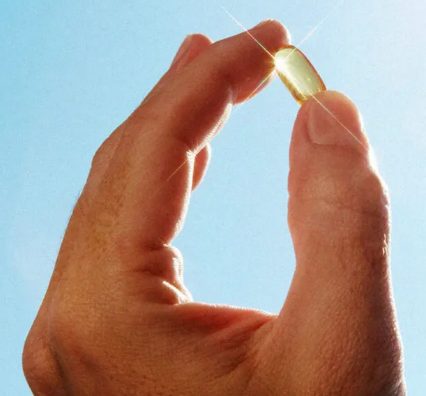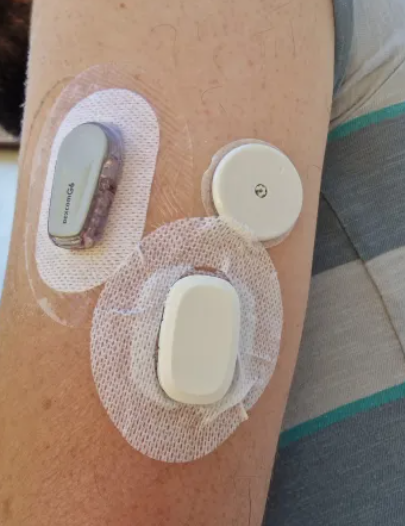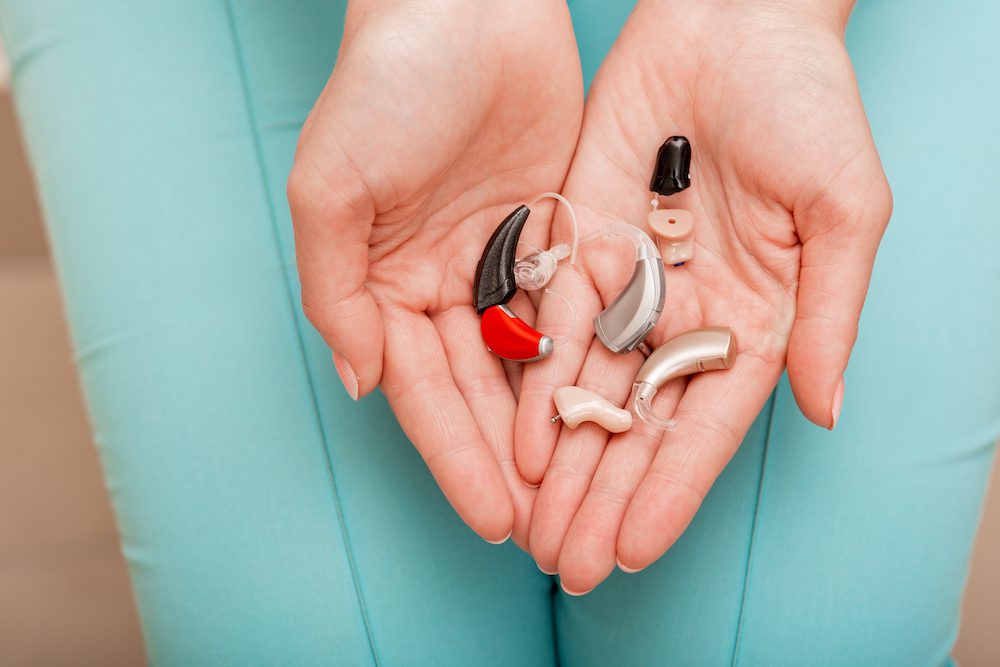Vitamin D supplements may help reduce chronic inflammation was written by Annie Lennon for MedicalNewsToday.com,15 August 2022.
 Systematic low-grade inflammation is characterized by the prolonged release of inflammatory molecules and is linked to various health conditions. While vitamin D is classically known for regulating calcium levels, recent studies have shown that it may play a role in modulating the body’s inflammatory response too. For example, research has linked vitamin D concentrations in the blood with C-reactive protein levels (CRP), a widely used inflammatory biomarker.
Systematic low-grade inflammation is characterized by the prolonged release of inflammatory molecules and is linked to various health conditions. While vitamin D is classically known for regulating calcium levels, recent studies have shown that it may play a role in modulating the body’s inflammatory response too. For example, research has linked vitamin D concentrations in the blood with C-reactive protein levels (CRP), a widely used inflammatory biomarker.
Recently, researchers examined the evidence for whether vitamin D levels influence CRP levels in a new study. The researchers reported a direct link between low vitamin D levels and higher CRP levels. They say that their findings could provide an important biomarker for identifying people at risk of inflammatory illnesses. “There is mounting evidence that improvement in vitamin D status reduces the risk for autoimmune diseases including type 1 diabetes, multiple sclerosis and other inflammatory disorders such as type 2 diabetes and cardiovascular disease,” Dr. Michael F. Holick, professor of medicine at Boston University School of Medicine, who was not involved in the study.
“This is also consistent with the recent observation from the VITAL trial that reported that those adults who took 2000 IUs vitamin D3 daily for up to 5 years reduced risk of all autoimmune disorders by 22% compared to the placebo group,” he added. The study was published in the International Journal of Epidemiology.
Talk with your healthcare professionals as this is only information, not medical advice.
Read more: Vitamin D supplements may help reduce chronic inflammation
A DEEP DIVE into CGM comparisons, plus a new entry?
 Here is a series of posts by a T1D technophile who thinks like an engineer and tests lots of diabetes technology … and then shares his process and n=1 results. Please meet Tim Street, as in the UK, is the founder of the wonderful blog, Diabettech … definitely worth subscribing. It’s technical but you can always learn something from Tim. Tim took on a review of 6 current CGMs available through the NHS in the UK. In this series, he reviews:
Here is a series of posts by a T1D technophile who thinks like an engineer and tests lots of diabetes technology … and then shares his process and n=1 results. Please meet Tim Street, as in the UK, is the founder of the wonderful blog, Diabettech … definitely worth subscribing. It’s technical but you can always learn something from Tim. Tim took on a review of 6 current CGMs available through the NHS in the UK. In this series, he reviews:
-
- Dexcom One
- Medtrum
- Dexcom G6
- Glucomen Day
- GlucoRX Aidex
- Freestyle Libre2
He takes you through the packaging and unpacking each system, even pointing out the medical waste!
 Early on: Ten days come to an end, and the first and most obvious, difference between the Dexcom devices and the rest is immediately obvious. The Dexcom sensors have come to an end, while the rest keep going until 14 days. This might not seem like a big issue, but for quite a few people, the ability to know that on the same day of the week, at more or less the same time, they will change their sensor, provides one less thing to worry about.
Early on: Ten days come to an end, and the first and most obvious, difference between the Dexcom devices and the rest is immediately obvious. The Dexcom sensors have come to an end, while the rest keep going until 14 days. This might not seem like a big issue, but for quite a few people, the ability to know that on the same day of the week, at more or less the same time, they will change their sensor, provides one less thing to worry about.
Uh oh, TECH ALERT! Here Tim looks at CGM error grids! And then, how to extend the life of the Dexcom One. And finally to the MATH part: digging into the statistics!
Read the series:
 AND for the teaser, YES, there is a very new entry into the CGM market, coming from southern California! Zense, “Provider of Smart Medical Devices for Glucose Monitoring” was started in 2018. Their website doesn’t say anything more, just a pretty graphic. Leadership includes Leif Bowman, CEO/Co-Founder, Robert Boock PhD, CEO/CoFounder, Jane Conner and Huashi Zhang, CMO. We’ll keep an eye on them! Website: Zense
AND for the teaser, YES, there is a very new entry into the CGM market, coming from southern California! Zense, “Provider of Smart Medical Devices for Glucose Monitoring” was started in 2018. Their website doesn’t say anything more, just a pretty graphic. Leadership includes Leif Bowman, CEO/Co-Founder, Robert Boock PhD, CEO/CoFounder, Jane Conner and Huashi Zhang, CMO. We’ll keep an eye on them! Website: Zense
Hearing Aids Will Soon Be Sold Over the Counter. Here’s What You Need to Know was reported by Dani Blum for TheNewYorkTimes.com, 16 August 2022. A new F.D.A. rule will allow people to purchase hearing aids without prescriptions.
 As many as 30 million Americans have some trouble hearing, but few can afford to pay for doctors’ exams and prescription hearing aids — and most insurance plans don’t cover them. According to the Food and Drug Administration, only about one-fifth of Americans with hearing loss get help.
As many as 30 million Americans have some trouble hearing, but few can afford to pay for doctors’ exams and prescription hearing aids — and most insurance plans don’t cover them. According to the Food and Drug Administration, only about one-fifth of Americans with hearing loss get help.
The FDA has now taken a final step that could put more accessible, and potentially less expensive, hearing aids in stores by the fall. People seeking out hearing aids will no longer have to be examined by a doctor first. “As early as mid-October, Americans will be able to purchase more affordable hearing aids over the counter at pharmacies and stores across the country,” President Biden said. THE OPERATIVE WORDS HERE: “more affordable”
The new F.D.A. rule applies to adults ages 18 and older with mild to moderate hearing loss. As we age, we become more susceptible to losing our hearing. According to the National Institute on Deafness and Other Communication Disorders, approximately one in three people in the U.S. between the ages of 65 and 74 has some hearing loss, and nearly half of those older than 75 have difficulty hearing
COST: Currently, hearing aids are pricey — two hearing aids can cost as much as $5,000 or more, said Barbara Kelley, executive director of the Hearing Loss Association of America. But the F.D.A.’s decision could allow patients to receive care without an examination and fitting, which insurance companies do not often cover. Federal officials estimate that the rule will save people nearly $3,000 on the cost of a pair of hearing aids. NOT cheap though! A pair might cost $2000!
Why do I include this in my blog? According to the CDC on diabetes and hearing loss (Diabetes and Hearing Loss): Diabetes can lead to nerve damage that affects many parts of the body, including your hands, feet, eyes, and kidneys. Diabetes can also cause nerve damage in your ears. Over time, high blood sugar levels can damage small blood vessels and nerves in the inner ear. Low blood sugar over time can damage how the nerve signals travel from the inner ear to your brain. Both types of nerve damage can lead to hearing loss. Hearing loss is twice as common in people who have diabetes as it is in people of the same age who don’t.
Read more:
This is just interesting science!
A breakthrough study explains how chewing shaped human evolution was written by Nergis Firtina for InterestingEngineering.com, 19 August 2022.
 The first stage of digestion begins with chewing. In fact, it is such an important step that experts emphasize the importance of chewing many times. So, the act of chewing has a great role in our lives. But what if this action kick-started the evolution of our ancestors millions of years ago?
The first stage of digestion begins with chewing. In fact, it is such an important step that experts emphasize the importance of chewing many times. So, the act of chewing has a great role in our lives. But what if this action kick-started the evolution of our ancestors millions of years ago?
Scientists from Leiden University pursued the answer to this question and initiated comprehensive research, initially reported by The New York Times. The results of the study were published on Wednesday in the journal Science Advances. Using respirometry and electromyography of the masseter muscle, scientists found that chewing by human subjects represents a measurable energy sink. Moreover, it elevates metabolic rate above basal levels by 10 to 15 percent. “What we discovered was that chewing food takes a lot of energy. And more importantly: the harder the food, the more energy it takes.”
 As per The Scientist, the study started with a conversation over lunch. Paper co-author Adam van Casteren, an anthropologist at the University of Manchester in the UK, watched his coworker chew (and continue to chew) a salad and began wondering “how much more energy would be invested in eating a salad compared to eating a cooked meal?” So he and his colleagues designed an experiment to test just that. YOU GOTTA LOVE THIS!!!
As per The Scientist, the study started with a conversation over lunch. Paper co-author Adam van Casteren, an anthropologist at the University of Manchester in the UK, watched his coworker chew (and continue to chew) a salad and began wondering “how much more energy would be invested in eating a salad compared to eating a cooked meal?” So he and his colleagues designed an experiment to test just that. YOU GOTTA LOVE THIS!!!
Most foods today are processed and softer. But our ancestors had to eat seeds, nuts, and leaves. As a result, they spent much more energy chewing their food than modern humans. “Modern humans are quite weird,” says van Castaren. “We don’t chew very much because we cook and process all of our foods before we eat. But our ancestors would have been spending a lot of time chewing.”
Read more: A breakthrough study explains how chewing shaped human evolution


Vitamin D is such a powerful vitamin and wow it is almost free. Well, I mean sort of. At ACR in 2018, a scientist was discussing Vitamin D and its importance for inflammation of all types.